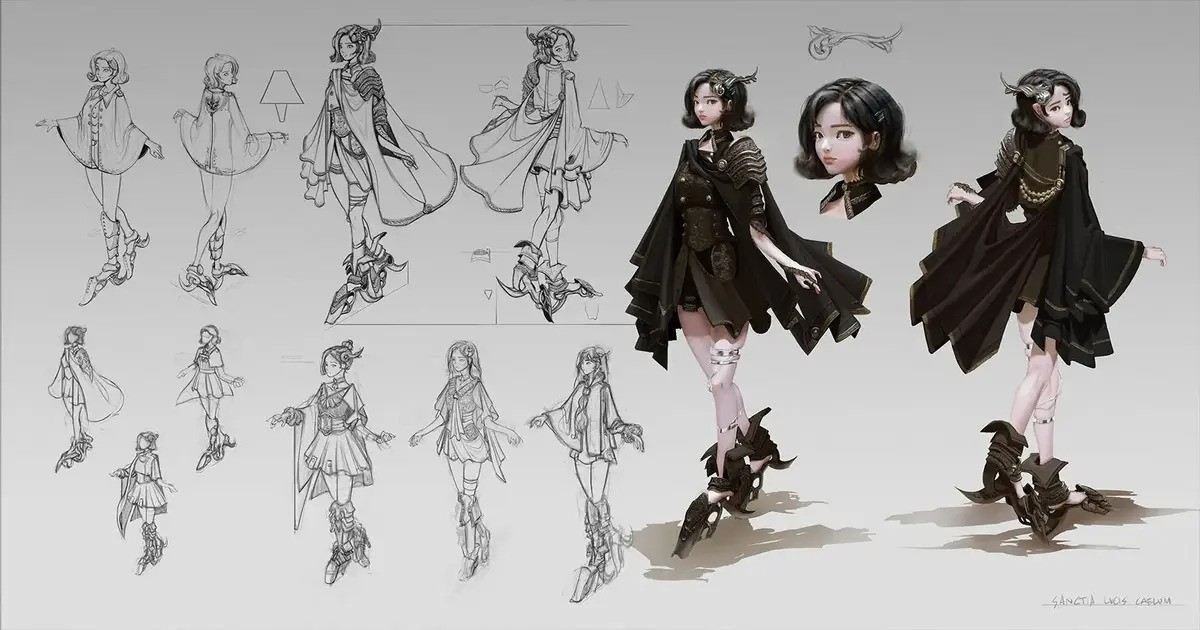
Short answer: A concept artist visualizes ideas, characters, environments, and objects early in development—turning abstract concepts into clear visual references for the whole team.
Who is NOT a Concept Artist?
- A person who only models 3D assets (that’s a 3D Modeler) is not a Concept Artist.
- A person who only textures or paints final assets (that’s a Texture Artist) is not a Concept Artist.
- A person who only directs art style (that’s an Art Director) is not a Concept Artist.
- A person who only animates characters (that’s an Animator) is not a Concept Artist.
What does a Concept Artist do?
- Visual exploration: sketch different ideas for characters, environments, props, and mood.
- Style definition: help establish the visual tone and artistic direction.
- Iteration: produce multiple variations quickly to explore creative options.
- Blueprints for production: deliver clear references for 3D artists, modelers, animators, and VFX.
- Moodboards: create collections of references and inspirations.
- Collaboration: work closely with art directors, designers, and writers to match visuals with narrative and gameplay.
Why it matters
Concept art is the visual foundation of a game. It guides artists and designers, prevents wasted effort, and ensures the team shares a unified vision before heavy production begins.
Common misconceptions
- “Concept art is just pretty drawings.” → It’s about problem-solving, not just illustration.
- “They work alone in isolation.” → They collaborate constantly with other departments.
- “Final game assets = concept art.” → Concept art is pre-production, not the polished in-game asset.
Core skills & tools
- Strong drawing & painting skills (anatomy, perspective, color theory).
- Digital tools: Photoshop, Procreate, Krita, Blender, Clip Studio Paint.
- Knowledge of design principles: shape language, silhouette, functionality.
- Fast iteration: speed sketching and rapid visual problem-solving.
- Communication: explain design intent through visuals.
Practical frameworks
- Silhouette first: design clarity in black-and-white shapes.
- Mood/value studies: test lighting, atmosphere, and emotional tone early.
- Shape language: round = friendly, sharp = dangerous, square = stable.
- Iteration rule: first 5 ideas are obvious; push beyond for innovation.
Portfolio tips
- Show iterations and process, not just polished pieces.
- Include variety: characters, environments, props.
- Demonstrate problem-solving (before/after explorations).
- Add callouts and notes explaining function, material, and inspiration.
Quick example
Think of The Witcher 3: the look of Geralt, monsters, villages, and landscapes started as concept sketches guiding 3D artists.
Or Overwatch: iconic heroes first defined by bold silhouettes and expressive concept art.
Author: Pouria Mojdeh
References:
- Scott Robertson – How to Draw: Drawing and Sketching Objects and Environments (Design Studio Press, 2013)
- Feng Zhu – Design Cinema (online lectures/resources)
- Richard Tilbury – Digital Painting Techniques (3DTotal Publishing, 2012)
- Jesse Schell – The Art of Game Design: A Book of Lenses (CRC Press, 2019)
- Game Developer (formerly Gamasutra) – www.gamedeveloper.com
